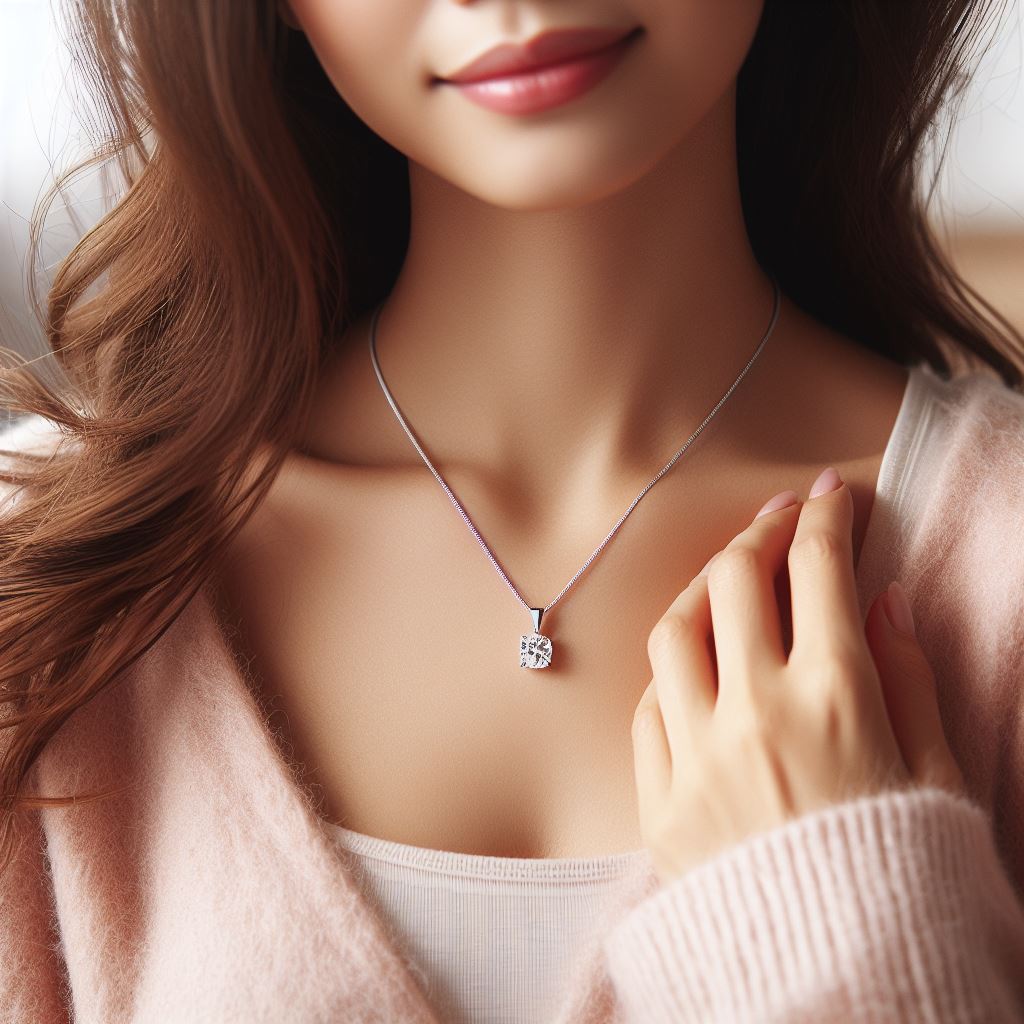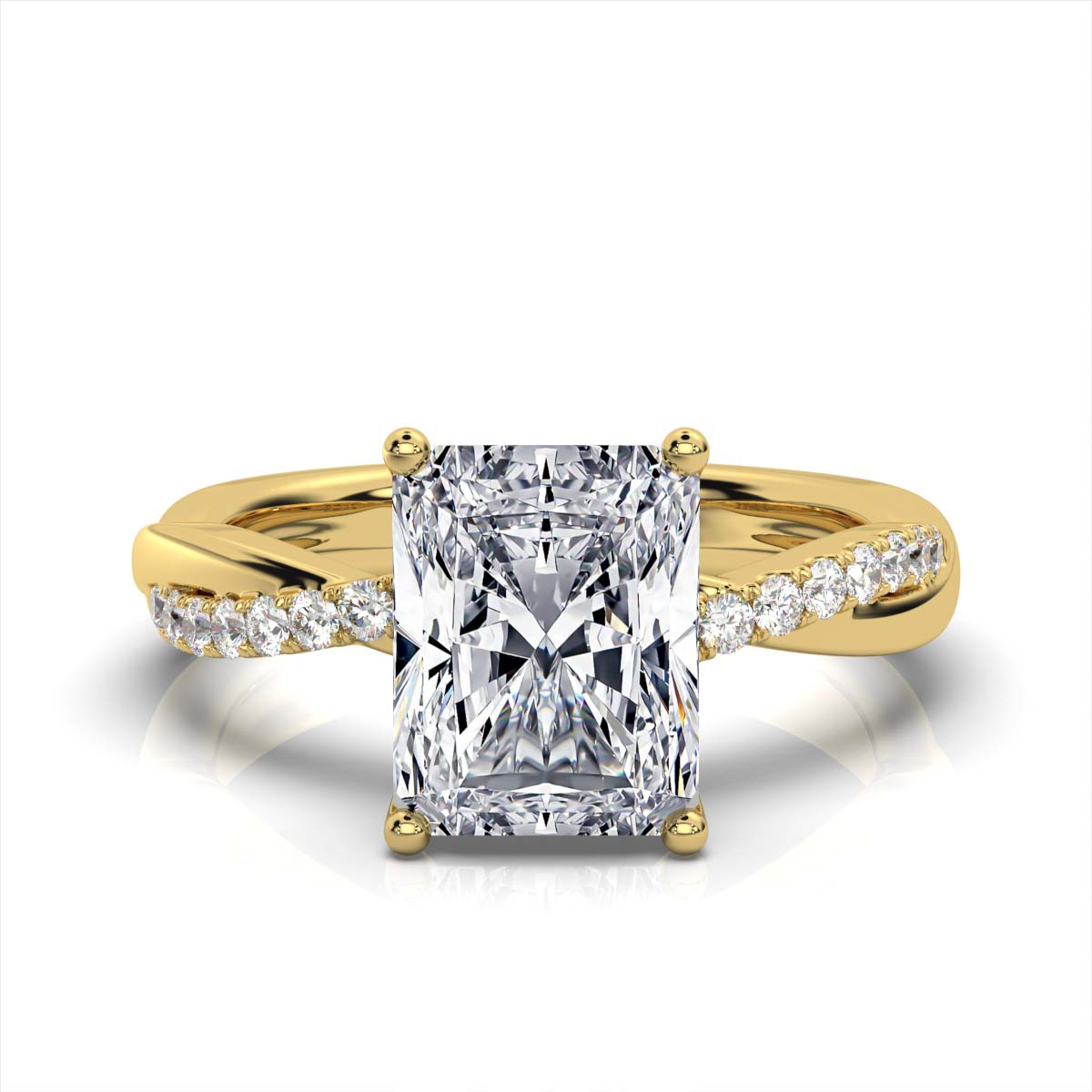How to evaluate diamonds using the 4 C’s
First, let us explain that while lab diamonds and natural diamonds are both real diamonds, this information applies to both. The 4 C’s are four features that have the greatest impact on the appearance of any lab or natural diamond.
Evaluating diamonds on the strength of their Four Cs was developed by The Gemological Institute of America (GIA) in the 1940s. Additionally, IGI reports have a section dedicated to this as well. To assist those who aren’t familiar, the reports include a scale. This is now the standard for grading and evaluating diamonds around the world.
Before the GIA’s grading system existed, the diamond industry did not have any definitive standards. The 4 C’s united these standards and ensured a unified approach for every gemologist, jeweler, and shopper.
Now, even someone who never purchased a diamond can protect their best interests – one that not only fits their budget but also maximizes it, as long as they have used the Four C’s.
Why are the Four C’s Important?
This will help you judge a diamond’s appearance.
Many gemologists and jewelers are experts in their field and have decades’ worth of experience studying diamonds – comparing them each and every day of their working lives.
For everyone else, diamonds can look pretty much the same. A little knowledge goes a long way here. Two of the Four Cs – clarity and color – refer to negative aspects that can encroach upon an otherwise beautiful diamond. These aspects need to be avoided as much as possible.
The other two – cut and carat weight – refer to more positive aspects: size and shape. They are equally important but will need to be considered differently to clarity and color.
- Cut
- What is the GIA Cut Scale?
- What is the Shape of a Diamond Called?
- Color
- What is the GIA Color Scale?
- Is Color Important?
- Clarity
- What is the GIA Clarity Scale?
- How is Diamond Clarity Graded?
- Carat
- How is Diamond Carat Measured?
- How Much is a 1 Carat Diamond?
- FAQ
- What is the Most Important of the 4 Cs of Diamonds?
- What is a GIA Diamond Grading Report?
- Is it Worth Buying a GIA Certified Diamond?
- Is it Safe to Order Diamond Ring Online?
- Is There a 5th C?
Cut
Diamonds come out of the earth, mined and rough. They are irregular shapes and unpolished. Aside from carat weight, a diamond’s cut is arguably its most noticeable trait – and a little simpler to get your head around than clarity and color. For that reason alone, it’s one of the most important factors for you to get right since any shortfalls will be obvious to everyone.
What is the GIA Cut Scale?
Ideal, Excellent, Very Good, Fair, and Poor
Cutters need to examine the shape and dimensions of the rough diamond in order to determine how to create the highest quality diamond possible, without losing too much of the original weight.
A diamond’s cut is by far the most significant factor influencing its fire, brilliance, and scintillation – or, in other words, its ability to sparkle as much as possible. Diamonds with a poor cut – for instance, one that is too shallow or asymmetrical – will not sparkle as well as they otherwise could.
To find a diamond’s cut grade, a gemologist will assess seven key components: brightness, fire, and scintillation – which, as we mentioned above, all relate to its light performance – as well as the more technical aspects of weight ratio, durability, polish, and symmetry.
Each of the 7 components is graded individually, although there is no singular way of combining them together to create one cut grade. The final grade will, to a certain extent, depend on the overall appearance of the diamond, which is why two diamonds can look totally different and still feature the same grade.
It is a little complicated but provided you stick to the higher grades and work with your jeweler to understand the particulars of your chosen diamond, you can ensure very high quality.
What is the Shape of a Diamond Called?
Diamonds can be cut into many shapes, from the traditional Round to the fancy cuts, like the Pear, Heart, and Oval, or the step cuts, such as the Emerald. Many people use the terms ‘cut’ and ‘shape’ interchangeably, and that can be a little confusing.
A diamond’s shape refers to its silhouette – arguably the most striking aspect, and the first thing you’ll notice when you lay eyes on it.
Color
Of all the Four Cs, color is probably the first curveball you’ll come across. While there are naturally colored diamonds out there – known as ‘fancy colors’, and available in just about any color imaginable.
Color even matters when searching for a clear diamond.
What is the GIA Color Scale?
The GIA grades diamonds on a letter color scale from D to Z. The less color a diamond has the higher the value it has. A diamond graded with the letter D is a colorless diamond and it continues up the scale to a diamond with the letter Z representing a light yellow or brownish tint. Each diamond is color graded by using controlled lighting.
This particular color scale applies only to clear diamonds, and fancy color diamonds are graded against an entirely different scale.
In clear diamonds, it is very common for diamonds to be ‘polluted’ by other substances during their development underground. For example, a high presence of nitrogen molecules can effectively pollute the diamond’s colorless appearance, and cause it to appear yellow or brown.
There is very little distinction between one grade and the next (particularly at the higher end of the scale, where any yellow tint requires specialist knowledge, lighting, and tools to detect), so the scale is divided into categories.
Colorless diamonds (D-F) are, obviously, the most expensive. Near Colorless diamonds (G-J) are, however, still of a high enough quality to appear clear, particularly to the untrained eye. Below that, however, discoloration will be more obvious and will impact the natural beauty of the stone.
Is Color Important?
Yes, as any visible yellow tint to your diamond could have a major impact on an otherwise beautiful engagement ring. Still, you don’t need to shoot for a D Color to make the most of your investment.
Remember how we said that there was very little difference between each separate color grade? While that may sound a little confusing right now, you’ll be glad you worked that one out when the time comes to hand over your hard-earned cash, since even an F Color diamond comes with a significantly higher price tag.
Clarity
A big part of a diamond’s quality stems from the level of inclusions and blemishes it has and, to accurately measure those, diamond graders have to inspect every part of a diamond’s surface and internal structure under 10x magnification.
What is the GIA Clarity Scale?
Inclusions are internal flaws, caused by natural forces and pollutants during the diamond’s long development underground. Most are far too small for the eye to see, although some can overwhelm a diamond and decrease its value by thousands of dollars. Blemishes are external flaws. Some are natural, but many are caused during the diamond’s journey from the earth’s surface to while the diamond is being handled or worn. Again, these are usually too small to be seen by the naked eye. When these inclusions and blemishes are small enough to go unnoticed without a microscope, a diamond is referred to as being eye-clean.
Eye clean diamonds will, by definition, appear to be as flawless as FL and IF diamonds – and they can be found in grades as low as VS and, at times, SI. Here is the full scale: Flawless (FL), Internally Flawless (IF), Very Very Slight Inclusions (VVS1 and VVS2), Very Slight Inclusions (VS1 and VS2), Slight Inclusions (SI1 and SI2), Inclusions (I1, I2, and I3).
How is Diamond Clarity Graded?
The GIA clarity grading system takes into consideration the size, nature, position, color, relief, and quantity of clarity characteristics visible under this high level of magnification. It does take an expert eye and 10x magnification to accurately identify any and all inclusions and blemishes a diamond has.
These imperfections are then documented on a diamond ‘plot’, which, as you can see from the image below, offers a map of a diamond’s inclusions. This plot is included in every single GIA Diamond Report and represents a unique ‘fingerprint’ for the diamond.
Only Flawless Diamonds will have no inclusions marked on their diamond plot. Although it is inevitable that they will still have inclusions, they may not even be visible under 60 or 100x magnification.
As with color, there is only a minor difference between one grade and the next – particularly in the case of degrees, such as VVS1 and VVS2. Here is a brief explainer of the separate grades:
- Flawless (FL) – No inclusions or blemishes are visible to a skilled grader using 10× magnification
- Internally Flawless (IF) – No inclusions and only blemishes are visible to a skilled grader using 10× magnification
- Very, Very Slightly Included (VVS1 and VVS2) – Inclusions are difficult for a skilled grader to see under 10× magnification
- Very Slightly Included (VS1 and VS2) – Inclusions are minor and range from difficult to somewhat easy for a skilled grader to see under 10x magnification
- Slightly Included (SI1 and SI2) – Inclusions are noticeable to a skilled grader under 10x magnification
- Included (I1, I2, and I3) – Inclusions are obvious under 10× magnification and may affect transparency and brilliance.
Carat
Remember how we said that cut is the most noticeable part of the diamond, second only to carat weight? This is because carat weight refers to the diamond’s size – although, obviously, two diamonds of the same carat weight can look significantly different in size if they are cut differently.
For instance, this 0.7 Carat Round Diamond can appear a little smaller than this 0.7 Carat Pear Diamond, since the latter boasts an elongated shape.
How is Diamond Carat Measured?
The first step in the GIA certification process is weighing and measuring the diamond. GIA gemologists use an electronic micro-balance to weigh each diamond to gather the carat weight. They also use an optical scanning device to determine the exact measurement and proportion of the diamond. These devices provide the most accurate measurements of a diamond. It’s very important that a diamond’s carat is recorded precisely by the grader since even the most minor discrepancy in weight between two otherwise identical diamonds can cause the price to change drastically.
Of all the Four Cs, carat is unique in the fact that there is no ‘optimal grade’. The average engagement ring diamond sits at around 1 carat, although recent years have seen many shoppers preferring larger diamonds around the 2 and 3-carat ranges.
1 carat is equal to 0.2 grams, or 200 milligrams. GIA gemologists use an electronic micro-balance to weigh each diamond to gather the carat weight. 1 carat is approximately the weight of a paperclip – or, perhaps more poetically, a raindrop. A carat is divided into 100 points. So, a 50-point diamond weighs .50 carats.
How Much is a 1 Carat Diamond?
Anywhere from $2,000 to $12,000 – or, in some rare cases, even more. While it would be simpler, it would be impossible for any diamond’s value to be determined by carat weight alone. Each of the Four Cs influence that final market value, which means that a one-carat diamond (or, for that matter, a two, three, or ten-carat diamond) has a very broad potential price range. When it comes to good quality diamonds, price tends to increase exponentially with carat weight.
What is the Most Important of the 4 Cs of Diamonds?
Most professionals in the diamond industry consider the cut of a diamond to be the most important of the 4 Cs. The cut of the diamond has the greatest influence on a diamond’s sparkle. And, while it’s true that all 4 Cs are important in collaboration, the cut is definitely a major player.
The second most important C of the 4 C’s is the diamond’s clarity and, following closely after that, color. Both the clarity and the color of a diamond play such a huge role in the stone’s value – and, more importantly to you, its beauty.
In both instances, you’ll want to aim for eye cleanliness. A diamond with no inclusions, blemishes, or discoloration that are visible to the naked eye will be as beautiful as one that is flawless while costing potentially thousands of dollars less. By this logic, carat is the least important – primarily because, as we mentioned above, there is no ‘right’ or ‘wrong’ carat weight.
Look at it this way: if you focused primarily on carat weight then, even on a budget of around $10,000, you could find a very large diamond indeed. But at what cost? In all likelihood, eye cleanliness will be impossible, which means your above-average diamond will feature visible inclusions, a strong yellow tint, and, potentially, a pretty poor cut.
What is a GIA Diamond Grading Report?
Every diamond that completes the GIA grading system and receives a complete assessment of the stone’s 4 C’s receives a GIA certification grading report, with a unique GIA Report Number. You should never invest in any diamond that does not come with an authentic GIA Report.
Is it Worth Buying a GIA Certified Diamond?
Absolutely. We would strongly urge any of our readers to invest only in diamonds with a valid GIA or IGI Report. Reputable jewelers will never try to sell you a diamond without this vital document.
Is it Safe to Order Diamond Ring Online?
Yes – if it is accompanied by a GIA or IGI report, there are fewer risks with reputable companies like The Art of Jewels, who are shopped by thousands of customers a day, have strong trust pilot reviews, and a free 30-day money-back guarantee.
If there’s one thing the Four Cs demonstrate beyond a shadow of a doubt, it’s the fact that every diamond is totally unique so pictures and/or virtual appointments are great! Even two diamonds with very similar grades can look noticeably different from one another.
Having a reputable jeweler by your side will ensure the perfect complement to your understanding of your bride-to-be. At The Art of Jewels, we have amassed an impressive network of lab grown diamond and natural gemstone manufacturers and growers – all of whom have met our extremely high standards for customer care. That way, you can feel sure that you are finding the perfect ring for your future bride.
To learn more about GIA grading or the 4 C’s or even compare lab grown diamonds, visit theartofjewels.com and try Zuri today!




